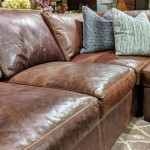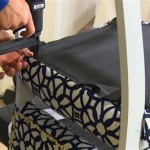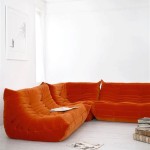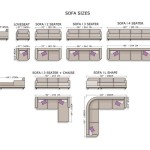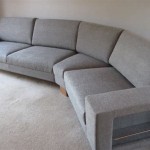How To Make A Sofa Cushion Cover
Creating sofa cushion covers is a practical and cost-effective way to refresh the look of a living space, protect existing cushions from wear and tear, or simply reflect a change in personal style. Understanding the process, from measuring and fabric selection to sewing and finishing, allows for customization and ensures a professional-looking result. A well-made cushion cover will not only enhance the aesthetic appeal of the sofa but also contribute to the overall comfort and longevity of the cushions themselves. This article will provide a comprehensive guide on how to make sofa cushion covers, covering essential steps and techniques.
Prior to starting any sewing project, proper preparation is paramount. This involves accurately measuring the cushions, selecting appropriate fabrics and necessary tools, and creating a pattern. These initial steps significantly impact the final outcome of the project. Rushing through them can lead to ill-fitting covers and unnecessary frustration. A thorough and methodical approach at the beginning will save time and effort in the long run.
Key Point 1: Measuring and Preparing the Cushion
The first critical step is to accurately measure the cushions that will be covered. It is important to take measurements precisely, as even small discrepancies can result in a poorly fitting cover. There are several methods for taking these measurements, each with its own advantages.
For square or rectangular cushions, measure the length, width, and depth. When measuring the depth, consider the loft or thickness of the cushion. This measurement will determine the size of the side panels, if any, needed for the cover. It is advisable to add a seam allowance to each measurement, typically ranging from 1/2 inch to 1 inch, depending on the desired fit and the type of fabric being used. A larger seam allowance provides more room for adjustments during the sewing process.
For irregularly shaped cushions, a more detailed approach is required. One method involves using a large piece of paper or fabric to create a template. Place the cushion on the paper and trace its outline. Add the desired seam allowance around the traced outline. This template will serve as the pattern for cutting the fabric. Another approach is to use a flexible measuring tape to follow the contours of the cushion, recording the measurements at various points. These measurements can then be used to create a pattern on paper.
Once the measurements are taken, the next step is to prepare the pattern. For simple square or rectangular cushions, the pattern can be drawn directly onto the fabric using a fabric marker or tailor's chalk. For more complex shapes, transfer the template created earlier onto the fabric. Ensure that the pattern pieces are accurately cut out, following the lines precisely. Consider labeling each piece to avoid confusion during the sewing process. Identifying the top, bottom, and side panels will simplify assembly.
Choosing the right tools is equally important. A sharp pair of fabric scissors or a rotary cutter is essential for accurate cutting. A measuring tape, ruler, and fabric marker are needed for marking and measuring the fabric. Pins are used to hold the fabric pieces together during sewing. A sewing machine with a suitable needle for the chosen fabric is necessary for stitching the seams. An iron and ironing board are vital for pressing the seams and creating a crisp, professional finish.
Fabric selection plays a crucial role in the overall appearance and durability of the cushion cover. Consider the intended use of the cushions and the overall style of the room when choosing a fabric. Durable fabrics such as canvas, denim, or upholstery-weight cotton are suitable for cushions that will receive heavy use. Softer fabrics like linen or velvet are appropriate for cushions that are primarily decorative. Ensure that the fabric is pre-washed and dried to prevent shrinkage after the cover is made. This step is particularly important for natural fibers like cotton and linen.
Key Point 2: Sewing the Cushion Cover
With the fabric cut and the pattern prepared, the next step is to sew the cushion cover. The sewing process involves assembling the fabric pieces according to the pattern, creating the seams, and adding any desired embellishments or closures. A methodical approach and careful attention to detail are essential for achieving a professional-looking result.
Begin by pinning the fabric pieces together, right sides facing each other. Align the edges carefully and ensure that the pins are placed perpendicular to the seam line. This will prevent the fabric from shifting during sewing. For cushions with side panels, start by attaching the side panels to the top and bottom pieces. Sew the seams using a straight stitch, following the seam allowance indicated on the pattern. Backstitch at the beginning and end of each seam to secure the stitches and prevent unraveling.
After sewing each seam, press it open using an iron. This will create a flatter and more professional-looking finish. Pressing the seams open also helps to distribute the bulk of the fabric and prevent the cover from puckering. Use a pressing cloth to protect delicate fabrics from scorching. For thicker fabrics, consider using a steam iron to help flatten the seams.
When sewing the final seam, leave an opening large enough to insert the cushion. The size of the opening will depend on the size and shape of the cushion. Typically, an opening of 12 to 18 inches is sufficient for most cushions. Before turning the cover right side out, trim the corners to reduce bulk. This will create sharper and more defined corners when the cover is turned. Be careful not to cut too close to the seam line, as this can weaken the seam.
Turn the cushion cover right side out and use a point turner or a knitting needle to push out the corners. Ensure that the corners are fully extended and that the seams are smooth. Press the cover again to remove any wrinkles and create a crisp, finished look. Pay particular attention to the edges of the opening, ensuring that they are neatly folded and pressed.
The final step is to close the opening. There are several options for closing the opening, each with its own advantages. One option is to hand-stitch the opening closed using a blind stitch. This creates an invisible closure that is both secure and aesthetically pleasing. Another option is to use a zipper or Velcro closure. Zippers are durable and secure, while Velcro closures are easy to open and close. Choose the closure method that best suits the style of the cushion cover and personal preference.
Key Point 3: Adding Closures and Finishing Touches
The type of closure used for a cushion cover can significantly impact its functionality and appearance. Selecting the right closure and executing it properly adds to the overall quality of the finished product. Additionally, including finishing touches can elevate the cover from basic to bespoke.
Selecting a zipper closure involves choosing the appropriate type and size of zipper. Invisible zippers offer a seamless look, while exposed zippers can add a decorative element. Measure the opening of the cushion cover and select a zipper that is slightly longer. Before inserting the zipper, press the edges of the opening inward by the seam allowance. Pin the zipper in place, ensuring that the zipper teeth are aligned with the folded edge of the fabric. Use a zipper foot on the sewing machine to sew the zipper in place. Stitch close to the zipper teeth for a secure and professional finish.
For Velcro closures, cut two strips of Velcro that are slightly shorter than the opening of the cushion cover. Sew the hook side of the Velcro to one side of the opening and the loop side to the other side. Ensure that the Velcro strips are aligned properly so that they close securely. Velcro closures are easy to use and are a good option for cushions that need to be removed frequently.
Hand-stitching the opening closed using a blind stitch is a technique that creates an almost invisible seam. Thread a needle with a matching thread and knot the end. Insert the needle into the folded edge of one side of the opening and bring it out about 1/4 inch away. Then, insert the needle into the folded edge of the other side of the opening, directly opposite the first stitch. Continue stitching in this manner, creating small, overlapping stitches that are hidden within the folds of the fabric. Pull the thread taut after each stitch to close the seam. Tie off the thread securely and bury the knot within the seam.
Adding finishing touches can enhance the overall appearance of the cushion cover. Piping or cording can be added to the edges of the cover to create a more defined and polished look. Piping is made by encasing a cord within a strip of fabric and sewing it to the edge of the cushion cover. Fringes or tassels can be added to the corners of the cover to create a decorative effect. Buttons or embroidery can also be used to add embellishments and personalize the cover.
Once the cushion cover is complete, carefully insert the cushion into the cover. Ensure that the cushion fits snugly and that the corners are properly aligned. Close the zipper, Velcro, or hand-stitched closure securely. Inspect the cushion cover for any imperfections and make any necessary adjustments. Press the cover one last time to remove any wrinkles and create a smooth, finished look. With a few basic sewing skills and a little bit of creativity, anyone can create beautiful and functional sofa cushion covers that enhance the look and feel of their living space.

How To Diy Couch Cushion Covers

Easy Diy Drawstring Seat Cushion Cover

Reposhture Studio How To Make An Easy Elastic Cushion Cover Sewing Cushions Diy Covers Couch

How To Make A Cushion Cover And Other Slipcover Tutorials
:max_bytes(150000):strip_icc()/2RobbRestyle-9da508c4528645d3908f39db224c4086.jpg?strip=all)
20 Diy Couch Cover Ideas For Any Budget

Restyle Diy Custom Sofa Fabric Design

How To Cover A Chair Or Sofa With Loose Fit Slipcover In My Own Style

How To Sew Sofa Cushions With A Piped Edge Collective Gen

No Sew Simple Cushion Re Cover Diy Picklee

How To Make A Cushion Cover And Other Slipcover Tutorials
Related Posts

